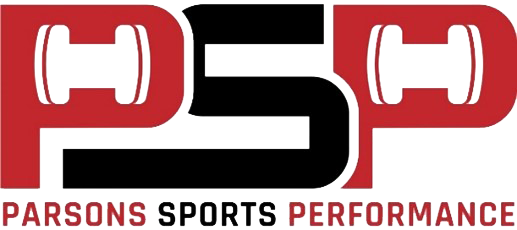IN-SEASON TRAINING & OVERCOMING ISO’S
Athletes, parents, and coaches worry strength training during the season will interfere with performance and as a result will put training on pause. They worry training will result in fatigue or injury. This is backwards logic. A well-planned in-season program will help mitigate injury, prevent performance decline throughout the season, and aid in an athlete’s recovery between practices and games.
Sport coaches assume running athletes into the ground after practice is sufficient at keeping work capacity and “conditioning” high. This is not the case. The only thing running endless poles or gassers does is induce neural and structural fatigue in the athlete… as well as make them really hate conditioning.
If you want an athlete to sufficiently recover week to week and maintain or even improve performance throughout the season the weight room should be put to use. Of course, there needs to be changes made to an in-season training program compared to an off-season training program. So, how is an in-season program different than an off-season program?
Basically, what is the athlete not getting from practice and games? That’s what we’ll prescribe in the weight room. No need to condition the athlete during the season, they’re getting the best conditioning possible already… playing their sport. What could be more sport-specific than playing the sport itself? There’s little need for plyometrics in-season (for most sports) since they’re getting more than enough from practice and games. In-season training should focus on two things: high intensity movements to maintain strength and power, and recovery.
Each in-season strength training program is going to look different depending on the athlete. Their weight room experience, age, level of stress, etc. These factors will determine what and how much the athlete can handle in-season. A method each of our athletes use in-season to maintain strength, regardless of age or ability, is overcoming isometrics.
An overcoming isometric is a maximal effort contraction against an immovable object. An example is setting up a barbell between two safety pins, with the top pin set below knee height. The athlete will set up as if they are going to pull a deadlift and will pull the barbell as hard as they can against the top pin for a prescribed time. When done with high intent this method produces the largest force production possible. This strength improvement carries over 15ᵒ above and below the prescribed joint angle. Meaning we can also use this method to attack weaknesses at specific joint angles in-season. A pitcher needs to keep his elbow strong throughout the season, but we don’t want to press heavy between outings. So, what do we do? Using the same protocol, set up just as we did the ISO deadlift, but for bench press with elbow flexion at 90ᵒ or above. This stimulus will help keep the pitcher’s elbow strong and healthy throughout the season.
The bigger reason to use overcoming ISO’s in-season rather than traditional strength methods is its low recovery time. Since we are using a form of isometric contraction, there is no joint
shearing or tissue gliding, meaning there is no inflammation. The recovery needs using overcoming ISO’s is extremely low, especially when compared to traditional methods.
We also utilize another form of ISO’s, yielding isometrics. Yielding isometrics are when you hold a certain position against gravity. For example, get into the bottom of a split squat position and hold for a prescribed time. This method is great to improve local muscular endurance as well as global neural endurance. We use this for the same reason we do overcoming ISO’s, isometrics require very little recovery.
Add in some sleds, high rep bands, and low volume single-joint exercise and you’ve got yourself a great in-season program. A program that will aid in recovery, mitigate risk of injury, AND increase performance throughout the season.
